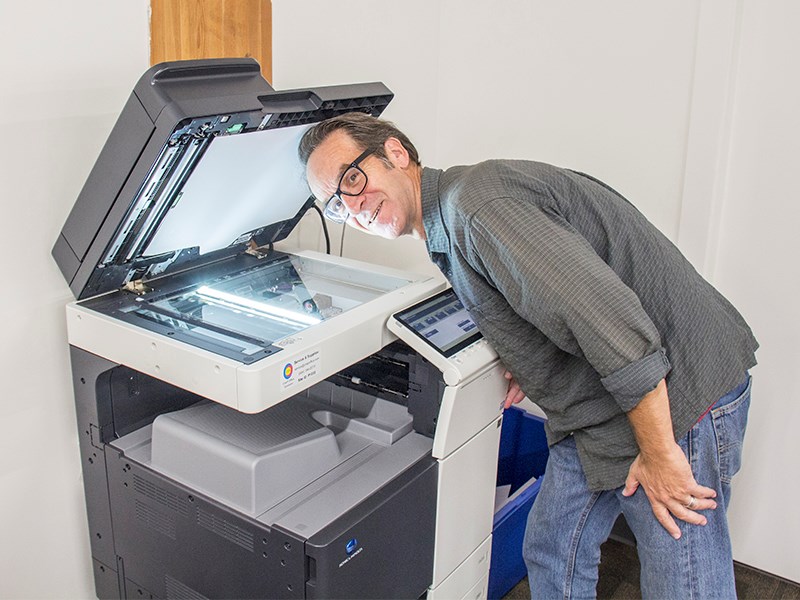Powell River Public Library is offering a way for youth to step away from screens and into the world of zines.
A new after-school program called Zine Lab delves into the self-made media that began with 1970s subculture and continues with the current zine culture resurgence in today’s youth.
Participants will learn to merge new technology, including layout and design software and laser cutters, with older technology such as typewriters, photos, letter presses, film cameras, markers, illustrations, doodles and photocopiers.
A zine is a magazine published on paper or online that gives the author complete freedom of expression and control, limited only by imagination and technology. The basics of making a zine are simple and easy to learn, according to library teen services coordinator Megan Cole.
“It can be any shape, any colour, and you can use high tech or low tech,” said Cole. “It can be on any subject.”
Every zine author attending the lab will have their own idea to express and freedom to create, according to Powell River writer Nola Poirier, who will teach writing and storytelling.
“A zine can be a comic, it can be a story, a journal or a cookbook,” said Poirier. “It depends on what you're writing.”
Creating a zine also depends on being very visual, even if the content is all text. A zine is supposed to be more visual than most written forms, said Poirier.
“It's about the layout and the font and where everything goes,” she said. “You don't have a lot of space, so you really need to be effective and efficient with your words.”
According to Powell River graphic designer and lab instructor Gary Shilling, before computers came along, typewriters and the photocopier played a big role. Photocopiers changed the zine culture, he said.
“Photocopiers had zoom built into them that could suddenly enlarge and do multiple generations, degrade images and turn things into barely recognizable forms, and merge text and graphics,” said Shilling.
Photocopiers also made it possible to create more zines in less time at a more affordable price.
“All of a sudden there is a photocopier and you can make a hundred copies for cheap,” said Cole.
In the 1970s, Shilling was involved in zines and the art scene on Queen Street West in Toronto, the neighbourhood where Canada’s new anti-establishment music, literary and political street scene were coming together and connecting by word of mouth, posters and zines.
Zine Lab will allow participants to create their own zine and be author, artist, editor, art director and publisher.
“It's a new way to interact in a real way through an old way,” said Shilling.
Zine Lab is provided in partnership with the library, School District 47 and Elsie Paul Literacy Centre. The free, weekly drop-in for youth ages eight and up runs from Tuesday, October 3, until Tuesday, December 5.
For more information, go to prpl.ca.



